Thrip is a common pest found in greenhouses and indoor and outdoor gardens, and more than 6,000 thrip species are sucking life from plants worldwide. Thrips are tiny insects with fringed wings about as fat as a sewing needle that dines on many plants worldwide. The thrips, or Thysanoptera or thunder flies, are sucking insects that feed on plants and cause some damage to them due to their sucking habits.
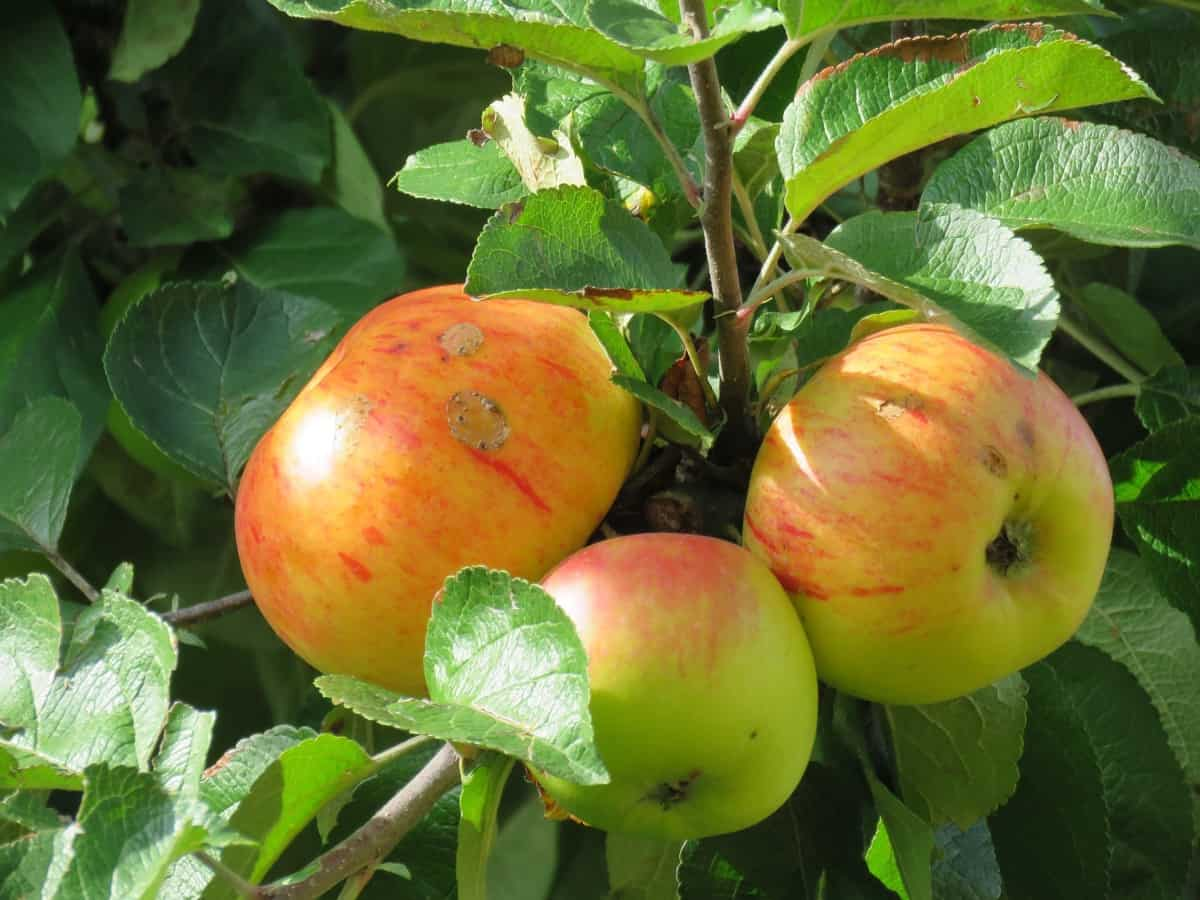
As a result of sucking plants’ juices and scraping at fruits, flowers, and leaves, thrips cause plants to suffer damage. However, the damage they can cause to plants can be much greater if they can transmit viruses to the plants. It is thought that thrips can travel long distances by floating with the wind or transporting themselves on infested plants, and exotic species of thrips are periodically introduced into the ecosystem.
How to control thrips in fruit crops
Life cycle
- Many factors determine the life cycle of the thrips, including the species of the thrips, the location, and the host plant. As adults, thrips overwinter in plant debris, bark, or other materials such as leaves and soil. The females become active in the early spring and lay their eggs in the tissues of the plants.
- The adults are minute, slender, soft-bodied insects with heavily fringed wings, blackish brown with yellowish wings, and measuring 1.4 mm long. Scirtothrips Dorsalis adult is straw yellow. The nymphs are minute yellowish brown.
- Female lays, on average, 50 dirty white bean-shaped eggs on the undersurface of leaves.
- The incubation period is 3-8 days. Newly hatched nymphs are reddish and turn yellowish brown as they grow. The pupal period lasts 2-5 days
- During the year, thrips can produce as many as fifteen generations per year. It is estimated that adult thrips live for about one month after birth.
In case you missed it: How to Control Pests and Diseases in Mustard Crop: Causes, Symptoms, Chemical, and Biological Management
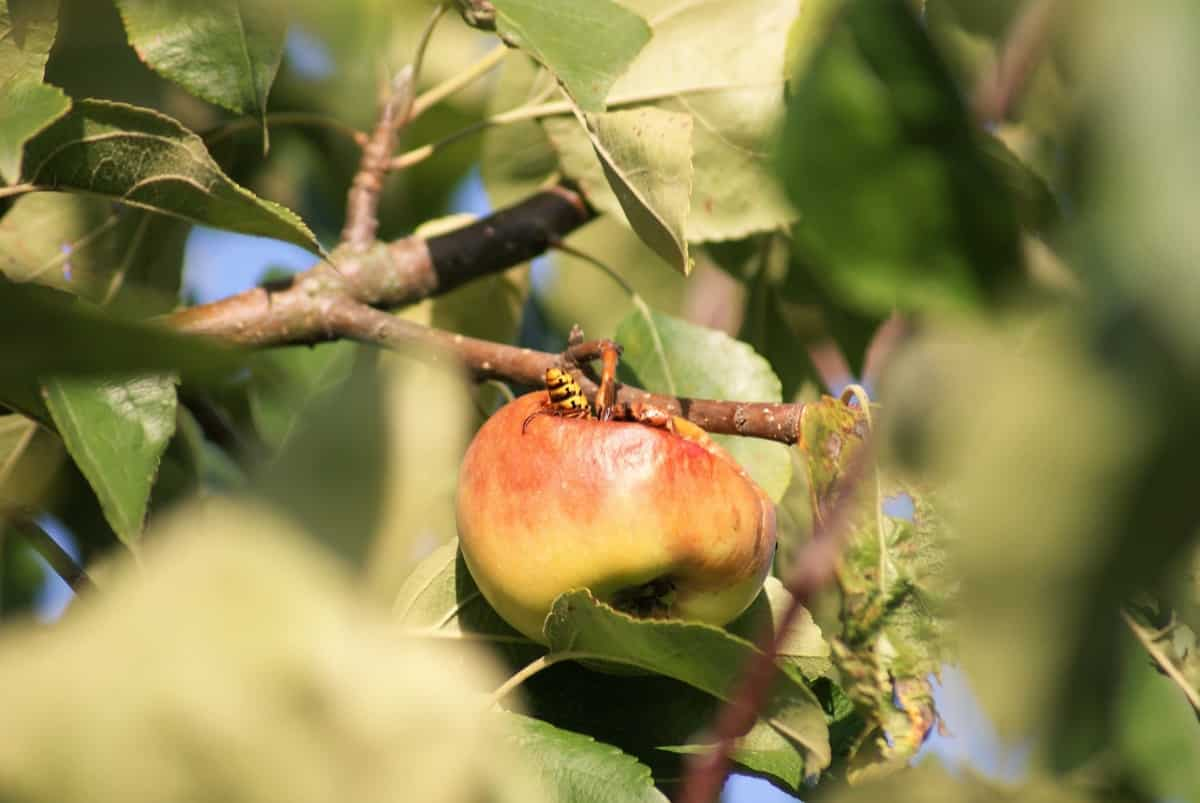
Identifying
In terms of size, thrips can be found in various sizes, with the smallest thrips being between 0.6 and 15 mm in length, which is a wide range of sizes. Since they are so small, they can enter even the smallest flowers or even the tiniest crack in a stem or bark due to their size. They have narrow, fringed wings, which is why they are called Thysanoptera (Latin for “wings fringed”) when their wings are present.
Despite their Lilliputian size, thrips often come with elaborately ornamented bodies, often adorned with hexagonal designs, spines, or flanges around the body flanges. In some bristles, the tips are expanded or elongated, or the body wall may be expanded to form prongs or forks. There are several species of thrips, and they can be distinguished by their brightly colored larvae (red, orange, or yellow), while their adults can range from whitish to brown or black. The common name bladder feet refers to adults having bladders that can be expanded on the tarsi of their legs.
Damage symptoms
In addition to damaging fruit, leaves, and shoots, thrips can negatively affect the cosmetic appearance of plants by feeding on their fruit, leaves, and shoots. Despite this, thrips rarely cause the death of trees or shrubs or threaten their survival in any way. As a result of thrips feeding and thrips-vectored viruses, there is an increased risk of serious injury to herbaceous ornamentals and some fruit crops, especially when they are young.
It is very important to know that thrips feeding can stunt plant growth, cause damaged leaves to become papery and distorted, produce tiny pale spots on the leaves (stippling), and cause the plants to drop prematurely. The terminals of infested plants may become discolored and rolled due to infection. The flower’s petals may exhibit a so-called “color break,” a pale or dark discoloration of the petal tissue that thrips have killed before bud opening.
The emergence of thrips at the beginning of the season can lead to severe stunting in the terminal growth of some plants. From midsummer through the fall, Cuban laurel thrips form tightly rolled, podlike leaf terminals on Ficus plants and form galled foliage. Some species of myoporum thrips can create tightly bunched and twisted terminal growths that resemble galls where large numbers of thrips will survive and reproduce.
Thrips can cause scabby scarring on avocados and citrus fruits, but they do not affect the taste or quality of the fruit inside. Grapes can develop dark scars surrounded by darker halos when thrips lay their eggs on them. As they develop, apples, nectarines, and raspberries may be deformed or scarred by thrips. Blueberry plants’ distorted shoot tips and foliage are caused by feeding several citrus thrips.
In case you missed it: Rice Blast Disease in Paddy Crop: Symptoms, Causes, Control Management, and Treatment
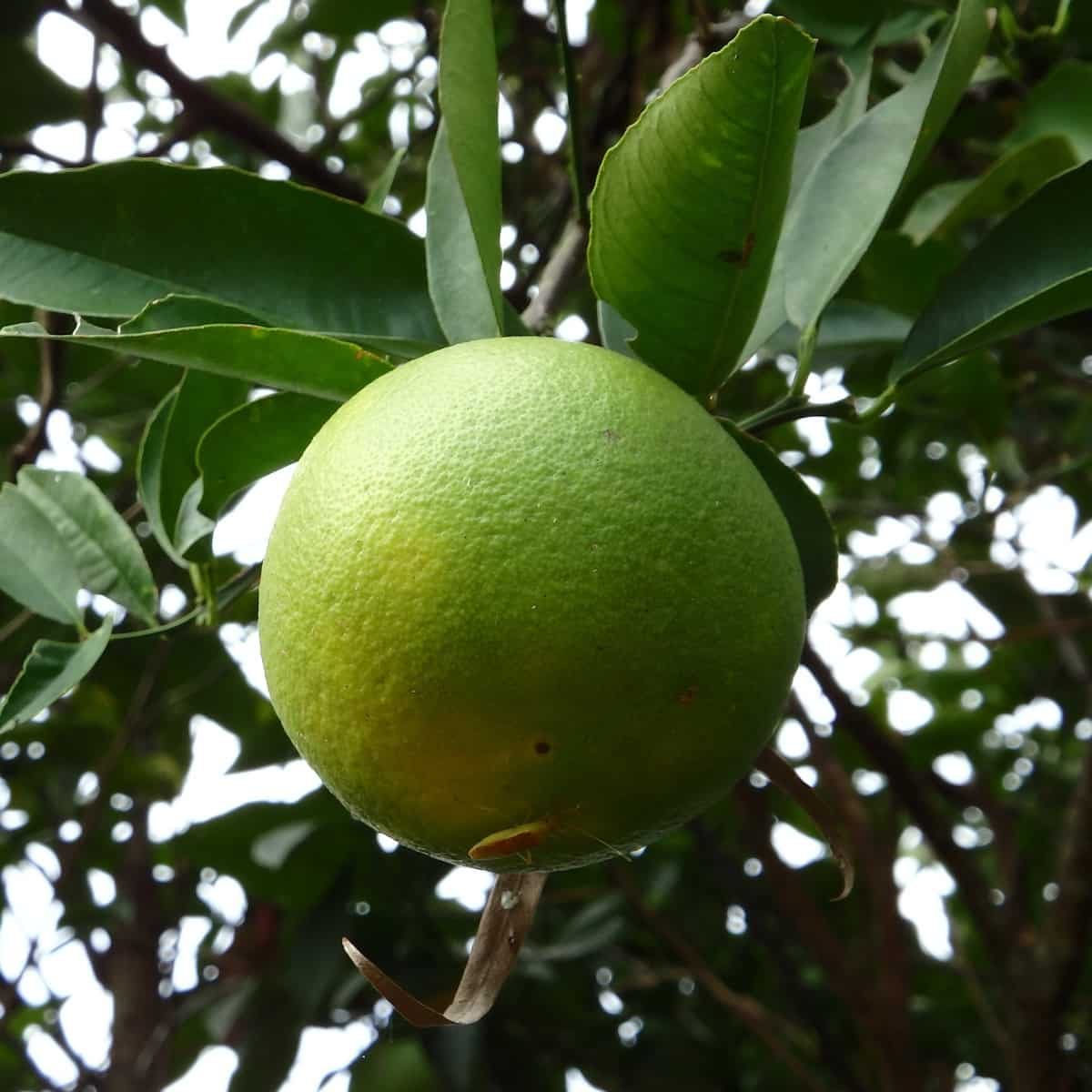
In many species of thrips, the thrips may no longer be present when damage has been observed, such as after the buds have opened in the spring. There are several abiotic disorders, pathogens, and other invertebrates that can cause damage that resembles that of thrips. Some bugs and mites produce fecal specks that stipple foliage in addition to the stippling caused by their feces, and some true bugs produce dark feces along with their feces that stipple foliage. Look carefully for the insects themselves to make sure that pest thrips are present and are the cause of the damage before taking control action.
Monitoring
- Assume that thrips are responsible for plant damage. It is, therefore, a matter of fruit crop maintenance to manage Thrips in this scenario. The adults and larvae of thrips can be observed by gently shaking foliage or stems onto a light-colored paper sheet, beating tray, or small cloth. Removing plant debris while it is still green and on the ground will be necessary to reduce the breeding places for thrips.
- Thrips lays its eggs in a slit cut in the stem of a live plant. It is also important to be vigilant in spotting problems early and responding to them. At the point where leaves are attached to stems, check your plants for damage and pest infestations. Take action immediately and take measures. You should also use products that are safe and proven.
- You can dislodge thrips from buds and unexpanded shoot tips by placing them in a jar with 70% ethanol (alcohol) and shaking vigorously to dislodge them. The solution should be filtered through filter paper so thrips can be readily seen. The presence of adult thrips can also be determined by hanging bright yellow sticky traps near host plants.
- There is no guarantee that thrips will cause damage from their feeding just because they are present. It is not necessarily necessary to take action if there are large numbers of thrips in traps or adults feeding on pollen in flowers.
- It is only through sending properly collected samples from affected plants to a lab that tests for plant pathogens that thrips-vectored viruses can be reliably diagnosed.
- It may be necessary to use pyrethrin as a botanical insecticide in cases of serious pest populations. Pyrethrin is a non-toxic, short-lived botanical insecticide. Maintain control by following up with predatory insects.
Biological control
- When thrips are a problem, learn whether they have specific natural enemies that can help control them. Those that help control plant-feeding thrips are predatory thrips, green lacewings, minute pirate bugs, mites, and parasitic wasps. Consider regularly rinsing dust off small plants, avoiding persistent pesticides, and growing a diverse range of plants to conserve and encourage naturally occurring populations of these benefits.
- Among the most important predators of citrus, thrips are mites of the Euseius species. The greenhouse thrips egg is killed by a tiny wasp called Megaphragma Mymaripenne up to 50% of the time. A relatively large round hole is left in a tiny thrips egg after the emerging adult parasite feeds inside the larval stage and pupates.
- Conserving natural enemies in the orchard, including predatory thrips, predatory mites, anthocorid bugs or minute pirate bugs, ground beetles, lacewings, hoverflies, ladybird beetles, and spiders, will reduce pest attacks considerably.
- Alternatively, when greenhouse thrips emerge from an unparasitic egg, part of its shell is often visible at the side of the blister. Thripobius Semiluteus parasitize greenhouse thrips larvae. A parasitized greenhouse thrips’ larvae become swollen around the head and then change to black, contrasting to the pale color of an unparasitic greenhouse thrips’ larvae. Black parasitized larvae are tiny and do not move, unlike healthy mature black thrips.
- Use early in the season for thrips control; do not apply for flower thrips in table-purpose grapes. At the beginning of the season, apply to a shoot length of one inch until it is set. During early spring, it will prevent shoot damage but not berry scarring. When spring temperatures are cool, shoot growth is slowed. Additionally, it controls mites and treats powdery mildew in spring.
In case you missed it: Leaf Curl Virus in Chilli Crop: Symptoms, Causes, Control, and Treatment
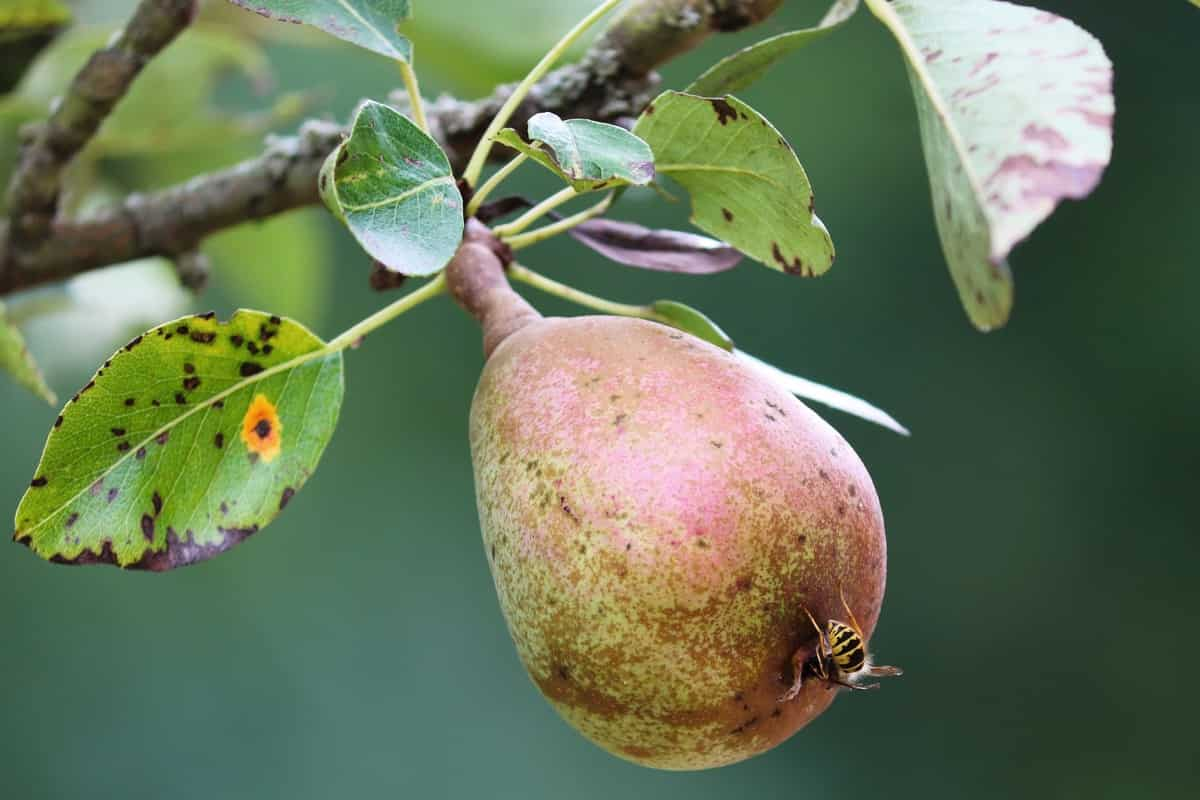
Chemical control for thrips in apples
- Chromobacterium subtsugae at 900 to 1350 grams per acre. Under heavy thrips populations, apply a knockdown insecticide before use or in a tank mix, use the much higher label rates and shorten the spray interval, or increase the spray volume to improve coverage.
- spinetoram at 130 to 200 ml per acre in up to 100 gal water per application. Do not overuse four applications per growing season.
- Use Spinosad at 60 to 90 ml per acre in up to 100 gal water per application. Do not exceed 260 ml per acre per season.
- Use Tolfenpyrad at 600 to 800 ml per acre in up to 100 gal water per application. See supplemental label. Aerial applications are not allowed—no more than two applications.
Chemical control for thrips in citrus fruits
- Always consider an integrated approach with preventive actions and biological treatments if available. Although the foliage can be attacked, normally healthy trees can withstand the damage caused by low thrips populations. Collect and destroy the damaged plant parts
- Spray with systemic insecticides at flush growth periods—spray malathion 0.05%, monocrotophos 0.036%, or carbaryl 0.1%.
- Encourage the activities of natural enemies such as Syrphids and Chrysopid
- Frequent pesticide applications are not recommended in non-bearing trees as this can lead to the development of resistance, making control of thrips more difficult in later years. Formulations containing abamectin, spinetoram, dimethoate, cyfluthrin, and abamectin can be used against citrus thrips.
Chemical control for thrips in guava
Pyrellin (pyrethrins + rotenone)- for use against aphids, caterpillars, fruit flies, leafhoppers, mites, thrips, weevils, and whiteflies at 1 – 2 pts per acre. No waiting period to harvest.
Chemical control for thrips in mango
- Monitor for thrips infestation by placing blue or yellow sticky traps at regular intervals. Neem-based pesticides control young nymphs effectively, inhibit the growth of older nymphs and reduce the egg-laying ability of adults.
- Spaying of Neem Seed Kernel Extract (5%) or Neem oil (2%) reduces the initial stages of the thrips effectively.
- If the infestation is severe, spray with insecticides like thiamethoxam 25% WG (0.3 g / lit) or Imidacloprid 17.8% SL (0.3 ml/lit) Spinosad 45%SC (0.4 g/lit).
Chemical control for thrips in grapes
- During the first few days after the hatching of the eggs, apply Spinosad to target the young larvae. In the case of heavy infestations, a second application will be required after four or five days. You should only apply honey bee spray in the late evening, night, or early morning when honey bees are absent to protect them.
- It is recommended that Narrow-range oil is used for controlling thrips early in the season; do not use it for controlling flower thrips in table grapes. During the early growing season, apply a 1-inch shoot length of the product until it is fully set. As a result of its use in early spring, it will help prevent shoot damage but is ineffective for treating scarring on berries. An everyday use of this method is to slow the growth of shoots in spring when the temperature is cool.
- In the spring, narrow-range oil serves as a contact treatment for powdery mildew and a control for mites. Make sure the leaf surfaces are thoroughly covered with spray using ground equipment. Every one to fourteen days, you should repeat the spraying process. Late-season applications may leave a residue on post-veraison berries. Do not apply with copper when the fruit is present; do not apply within ten days of sulfur. Read the label carefully for other use restrictions.
- Spray Dimethoate 0.06% at late flowering, followed by Acephate 0.1125% to control the pest. (b) Scirtothrips dorsalis has a similar occurrence and mode of damage as the above species and is controlled by two sprays of Monocrotophos 0.05% or Acephate 0.1125% at ten days intervals. Using ground equipment, spray for maximum coverage of leaf surfaces. Repeat sprays every 1 to 14 days.
- Late-season applications may leave a residue on post-veraison berries. Do not apply with copper when the fruit is present; do not apply within ten days of sulfur. Read the label carefully for other use restrictions.
In case you missed it: Sucking Pests in Chilli Crop: Symptoms, Causes, Control, and Treatment
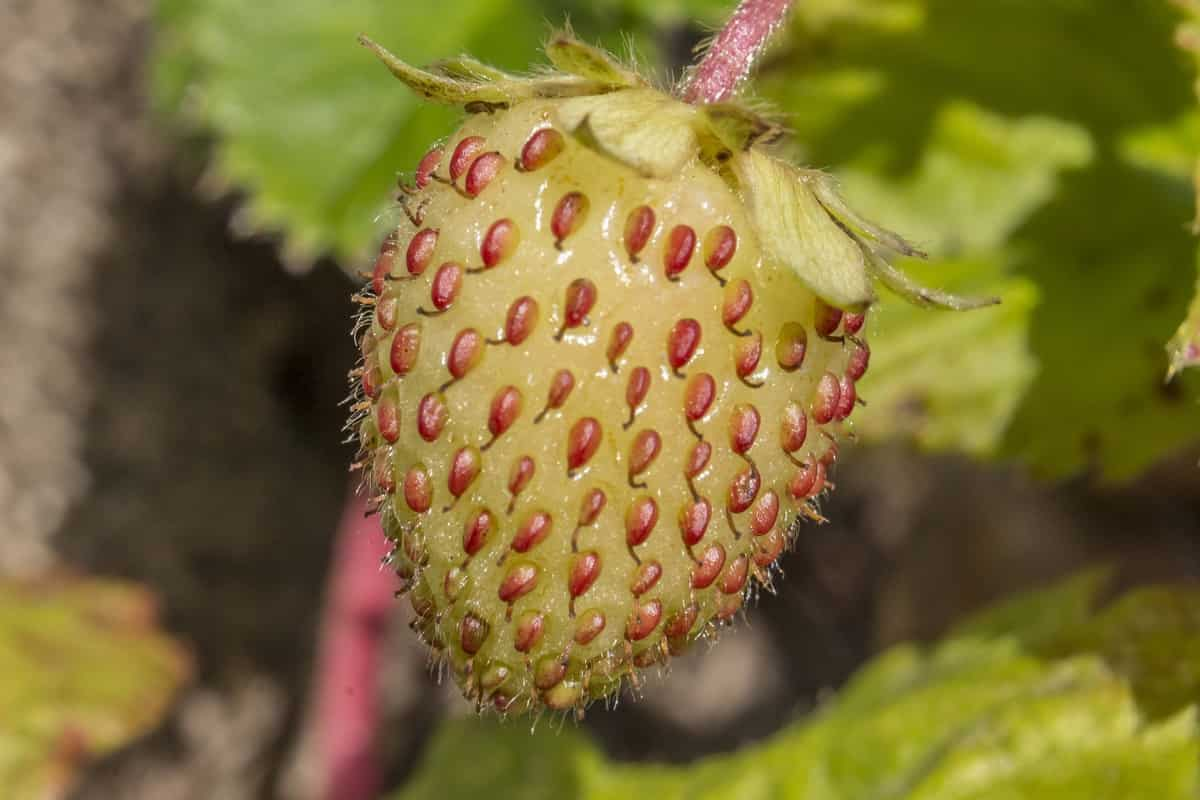
Chemical control for thrips pomegranate
- Spray Dimethoate 30 EC at 1.7 ml or Oxydemeton methyl 25 EC at 1.5 ml or imidacloprid 17.8 SC at 0.3 ml per liter of water.
- Spray Dimethoate 0.06% before flowering is essential, and in severe conditions, spray methyl oxy-demeton 0.05% and repeat after fruit set.
- Spray Chloropyriphos at 0.02% or imidacloprid at 0.04% or deltamethrin at 0.15 or Dichlorovos at 0.05% as prophylactic or on observing the symptoms.
- Both nymphs & adults lacerate and suck the oozing material from the leaves, flowers, and small developing fruits. On initiation of pest, spray ready-to-use neem-based pesticides at 20 ml (1% EC) to 40 ml (0.15% EC) per 10 lit of water. On higher incidence, spray cyantraniliprole 10.26 OD at 10 ml per 10 lit of water.
Chemical control for thrips in oranges
- Although the foliage can be attacked, normally healthy trees can withstand the damage caused by low thrips populations. Frequent pesticide applications are not recommended in non-bearing trees as this can lead to the development of resistance, making controlling thrips more difficult in later years. Formulations containing abamectin, spinetoram, dimethoate, cyfluthrin, and abamectin can be used against citrus thrips.
- Sprays of formulations of Spinosad with an organically approved oil, kaolin, or Sabadilla alkaloids applied with molasses or sugar bait are usually recommended in organically managed orchards.
Chemical control for thrips in Papaya
- Also, constant monitoring, pongamia oil or soap solution use in heavily infested sites and the judicious use of chemical insecticides and fertilizers are recommended.
- Spray methyldemeton 25 EC 2 ml/liter.
Chemical control for thrips in watermelons
- Soil application of neem cake (once immediately after germination and second at flowering) followed by spraying of NSKE at 4% with sticker (0.5 ml/l of water) at 10-15 days intervals.
Chemical control and management in sweet lime thrips
- In addition to using petroleum sprays for controlling thrips, IPM programs can be successfully implemented in the use of petroleum sprays. The importance of thorough coverage cannot be overstated. Ensure that young fruit do not come into contact before spraying for greenhouse thrips.
- It has been observed that organically grown trees treated with Spinosad early in spring are less likely to show signs of insect infestations. Several chemicals are also used to combat thrips, but they usually develop a resistance to them very quickly. When there are eight generations every year to deal with, it becomes clear that this is a losing battle. However, it is essential to note that some chemical formulas are designed to kill thrips. The use of pyrethroids and organophosphates is considered to be relatively non-toxic.
In case you missed it: How to Control Pests and Diseases in Date Plam: Causes, Symptoms, Chemical, and Biological Management

Conclusion
Thrips are tough customers when controlling once they have set in upon our roses. They will hide under the surfaces of leaves and flower buds. Following the control methods discussed above will prevent your fruit crops from thrips damage. Preventive actions should be taken at the initial stage of infestation.
- How to Make Houseplants Bushy: Effective Tips and Ideas
- Innovative Strategies for Boosting Coconut Pollination and Yield
- Pollination Strategies for Maximum Pumpkin Yield
- The Complete Guide to Chicken Fattening: Strategies for Maximum Growth
- Natural Solutions for Tulip Problems: 100% Effective Remedies for Leaf and Bulb-Related Issues
- Revolutionizing Citrus Preservation: Towards a Healthier, Greener Future
- Natural Solutions for Peony Leaf and Flower Problems: 100% Effective Remedies
- Maximizing Profits with Avocado Contract Farming in India: A Comprehensive Guide
- Natural Solutions for Hydrangea Problems: 100% Effective Remedies for Leaf and Flowers
- The Ultimate Guide to Choosing the Perfect Foliage Friend: Bringing Life Indoors
- From Sunlight to Sustainability: 15 Ways to Use Solar Technology in Agriculture
- The Ultimate Guide to Dong Tao Chicken: Exploring from History to Raising
- The Eco-Friendly Makeover: How to Convert Your Unused Swimming Pool into a Fish Pond
- Mastering the Art of Delaware Chicken Farming: Essentials for Healthy Backyard Flocks
- 20 Best Homemade Fertilizers for Money Plant: DIY Recipes and Application Methods
- How to Craft a Comprehensive Free-Range Chicken Farming Business Plan
- Brighten Your Flock: Raising Easter Egger Chickens for Beauty and Bounty
- How to Optimize Your Poultry Egg Farm Business Plan with These Strategies
- Subsidy for Spirulina Cultivation: How Indian Government Schemes Encouraging Spirulina Farmers
- Ultimate Guide to Raising Dominique Chickens: Breeding, Feeding, Egg-Production, and Care
- Mastering the Art of Raising Jersey Giant Chickens: Care, Feeding, and More
- Ultimate Guide to Raising Legbar Chickens: Breeding, Farming Practices, Diet, Egg-Production
- How to Raise Welsummer Chickens: A Comprehensive Guide for Beginners
- How to Protect Indoor Plants in Winter: A Comprehensive Guide
- Ultimate Guide to Grow Bag Gardening: Tips, Tricks, and Planting Ideas for Urban Gardeners
- Guide to Lotus Cultivation: How to Propagate, Plant, Grow, Care, Cost, and Profit
- Agriculture Drone Subsidy Scheme: Government Kisan Subsidy, License, and How to Apply Online
- Ultimate Guide to Raising Araucana Chickens: Breed Profile, Farming Economics, Diet, and Care
- Bringing Hydroponics to Classroom: Importance, Benefits of Learning for School Students
- Ultimate Guide to Raising Polish Chickens: Breed Profile, Farming Economics, Diet, and Care
- Ultimate Guide to Raising Australorp Chickens: Profile, Farming Economics, Egg Production, Diet, and Care
- Silkie Chicken Farming: Raising Practices, Varieties, Egg Production, Diet, and Care
- Sussex Chicken Farming: Raising Practices, Varieties, Egg Production, Diet and Care
- Homemade Feed Formulations for Livestock: Discover Cost-effective Starter to Finisher Feed Recipes
- 20 Best Pig Weight Gain Supplements: Top Swine Weight Gain Formulas
- Ultimate Guide to Elderberry Farming: Propagation, Planting, Yield, Cost, and Profit